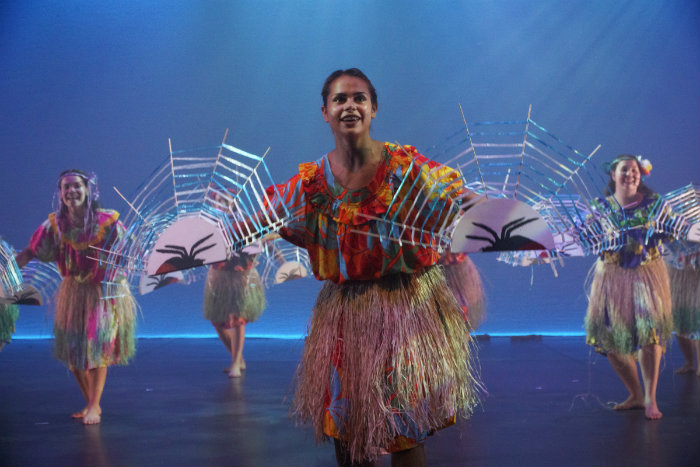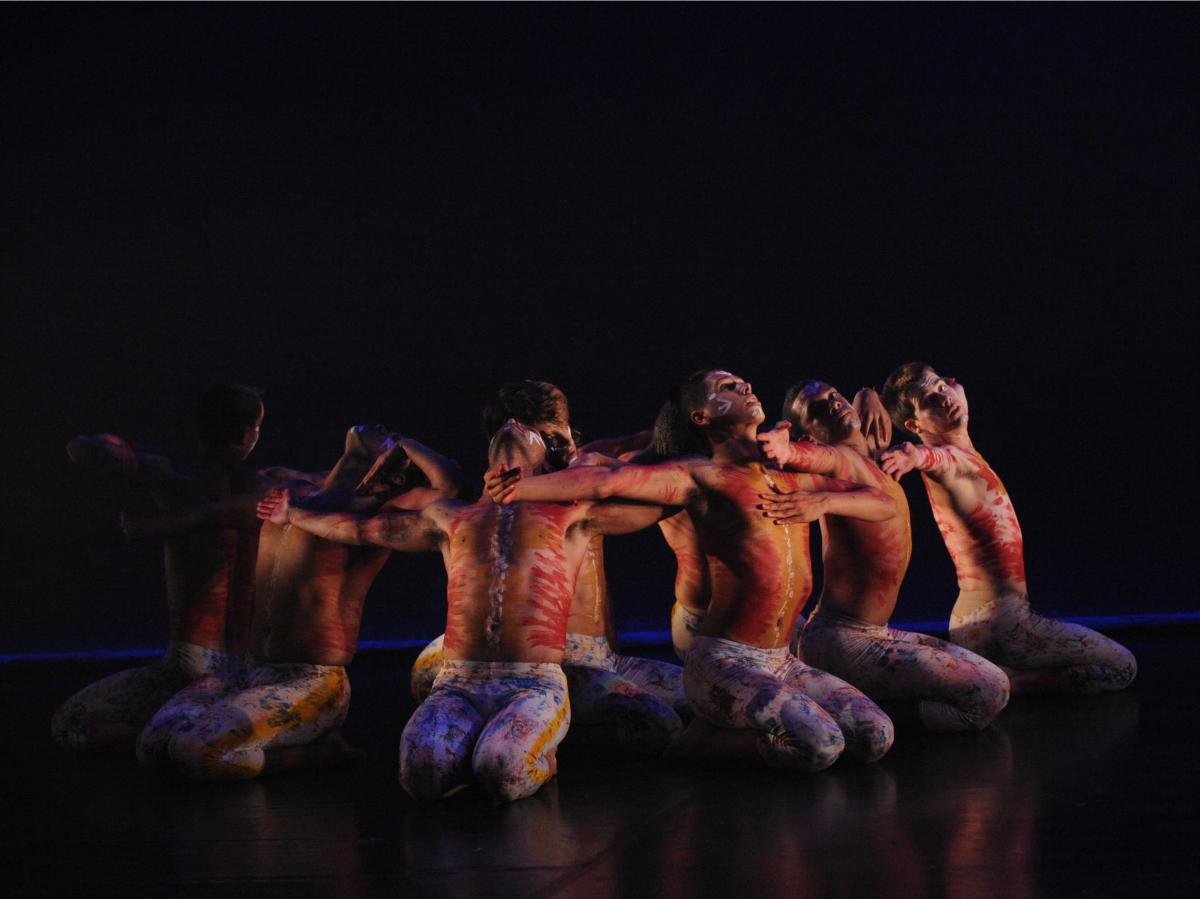NAISDA ‘Kamu’, 2015. Photo: Branco Gaica.
NAISDA Dance College is Australia’s leading performing arts organisation for Aboriginal and Torres Islander students wishing to train in dance and culture. Applications are open now for the 2019 intake. NAISDA has been training the next generation of Aboriginal and Torres Strait Islander performers since 1976. Entry to NAISDA is via auditions, to be held at the college in Kariong, on the NSW Central Coast, from 3-7December.
‘The accommodation, meals and travel costs associated with the auditions are covered by ABSTUDY, so we are accessible to everyone who wants to apply,’ said NAISDA CEO Kim Walker, a former professional dancer and leading arts administrator.
A NAISDA education gives students the skills, qualifications, and confidence to follow their creative passions and pursue a career in the arts. Students are known as Developing Artists, encouraging them to see themselves as arts professionals from the very beginning. The College currently offers three courses: Certificates III and IV in Dance Practice for Aboriginal and Torres Strait Islander Peoples and the Diploma of Professional Dance Performance for Aboriginal and Torres Strait Islander Peoples.
Travis De Vries, this year’s NSW Aboriginal Arts Fellow, graduated from NAISDA in 2010 and received the Chairman’s Award for Excellence. He has created a career across many art forms including painting, contemporary dance, choreography, music, and writing. He was a performer with Bangarra from 2010 to 2013, touring with the company nationally and internationally. De Vries is using the $50,000 Create NSW Fellowship to fund a research residency with the Australian Museum. Originally interested in visual art, De Vries says NAISDA opened his eyes to different forms of artistic expression.
‘NAISDA is known for dance, but it exposes you to other performance aspects like drama, physical theatre and composition. It gave me the confidence to discover other forms and use my voice as a theatre producer and a dance producer,’ said De Vries.

NAISDA: DA Lillian Banks doing a Torres Strait Island dance. Photo credit: Jhuny-Boy Burja.
Choreographer Thomas E. S. Kelly has enjoyed a long-term relationship with NAISDA, first as a student and now for six years as trainer and choreographer . He said studying at NAISDA ‘helped me to achieve my Plan A by being there for me and supporting me. That’s good news for me, because nobody really wants to do their Plan B!’
Kelly knew he wanted to study drama and discovered NAISDA through a recommendation at school. ‘My teacher suggested NAISDA due to the various performing arts elements you get to experience. As soon as I started at NAISDA I never looked back.’
Kelly says he has a special place in his heart for NAISDA’s Contemporary Dance Tutor, Vicki Van Hout, for the way she ‘took me under her wing and mentored me’. This personal support and help with professional development is a very important aspect of the student experience at NAISDA.
Learn more about studying at NAISDA
For dancer Kassidy Waters, taking part in the remote Cultural Residency was one of the highlights of her four years studying at NAISDA. She said the opportunity to visit Moa Island, one of the Torres Strait Islands in Queensland, was ‘something that you definitely don’t forget’. This strong bond with Elders and traditional communities across Australia is at the centre of NAISDA’s teaching methods.
All Developing Artists at NAISDA are given the opportunity to take part in Cultural Residencies so they have the experience of visiting and working on country. Waters also recognises the real-world professional experience of the NAISDA college as a definite advantage, saying ‘because members of NAISDA’s teaching staff are involved in the dance industry, I found their experience and advice to be really helpful’.
Waters also received a scholarship from the Joanne Harris Fund after her graduation, to assist with further professional development. The scholarship program which has four support categories, was established at NAISDA for current Developing Artists and graduates through a generous bequest from the late Joanne Harris ‘for the betterment and education of Aboriginal people’. The significant bequest valued at $1.6M has allowed the development of the life-changing scholarship program in consultation with Chris Harris, brother of Joanne – who was a dancer and educator. Studying at NAISDA is a little different to most tertiary institutions. It has a smaller student cohort, so every student is personally known and nurtured by the staff, while on-site cottage accommodation, and home-stay programs in the local area for younger students, create a genuinely collegiate experience.
NAISDA is proud of its cultural ties, saying that Aboriginal and Torres Strait Island culture will always sound the heartbeat of NAISDA Dance College and underpin all elements of their courses. ‘As a rich place of cultural learning, we affirm and celebrate our cultural identities and provide a pathway to confidence and self-expression,’ Walker said.
Auditions for NAISDA’s 2019 intake take place from 3-7 December 2018 and are open to Aboriginal or Torres Strait Islander people aged from 16 to 26. NAISDA encourages applications from all interested students, including those who may have disengaged from school and might not see themselves undertaking traditional tertiary studies.
Find out more and download the audition pack at naisda.com.au to take the first step towards your exciting artistic future.





